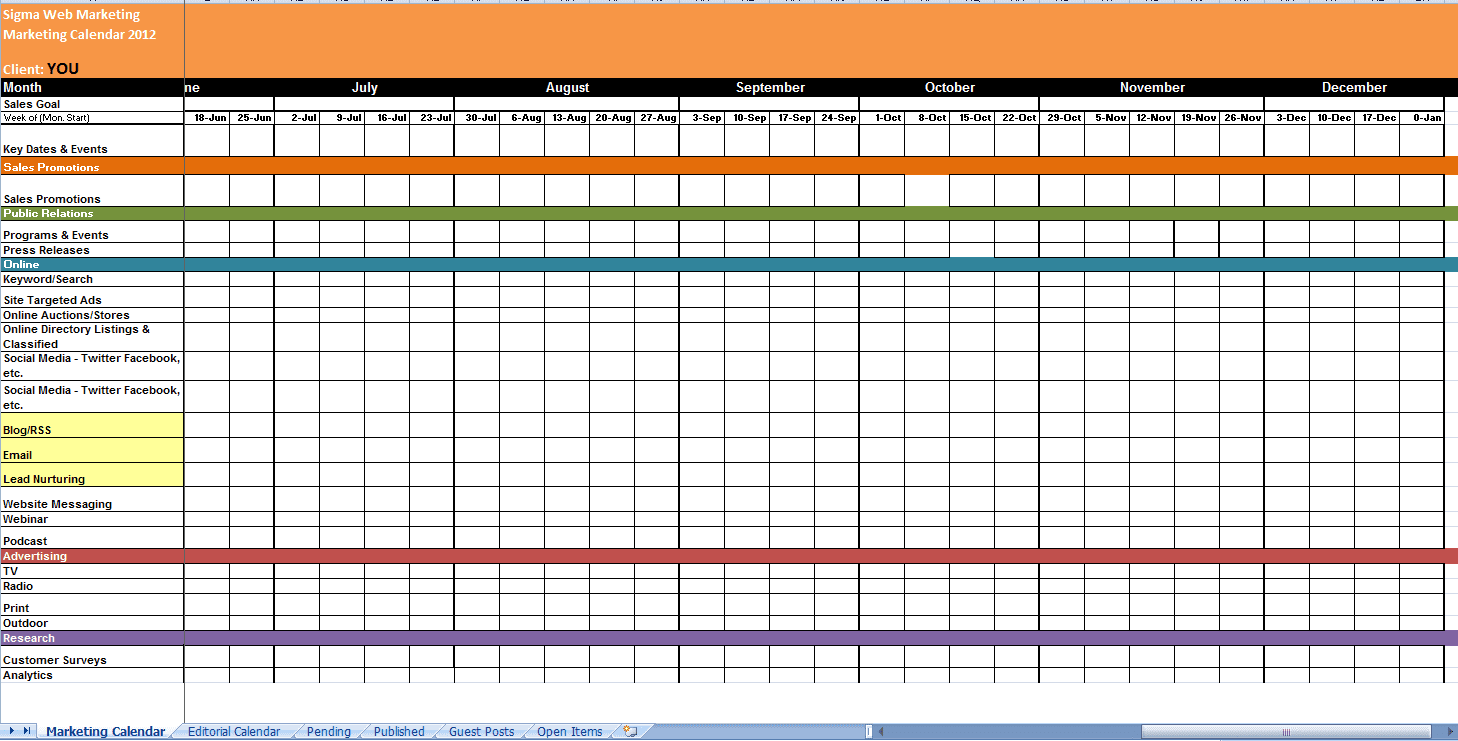 People talk about using a marketing editorial calendar — but really, why bother?
People talk about using a marketing editorial calendar — but really, why bother?
If you’re a very small company, and your role is blogger, marketer, CEO, founder, and chief-of-everything, you probably don’t need a fancy calendar. You blog when you want, on whatever topic moves you at the moment.
But if you’re working in a B2B company with several million dollars of revenue (or more), and particularly if you have multiple content creators, you definitely can benefit from using a marketing editorial calendar.
Most of us are familiar with the idea of an editorial calendar that helps us visualize our content publishing on a calendar-like interface. A marketing editorial calendar is a little bit different; it should provide you with a bird’s-eye view of what’s coming up, including:
- Provide a place to generate post ideas and keywords that you are targeting.
- Provide a space for notes of inspirational links to related blog posts.
- Assign writing and other editorial tasks to key members of your team.
- Create a publishing schedule that helps you maintain a consistent presence.
- Allow you to make in-process adjustments with drag-and-drop ease.
- Visualize your marketing strategy in a way that everyone can understand.
- Act as a communication point to team members.

The calendar we use makes it easy to see when my posts are going to be published, the related campaign, keywords to target in my post, the suggested title or topic, the status of the post (In Process, Editing, Scheduled, Published) and some note or links to get me started thinking about my topic.
In our internal process, blog posts must be completed 2 business days ahead of publication, so that we have time to edit, add a featured image, and schedule it for publication first thing in the morning.
Why you need a marketing editorial calendar
Our marketing calendar template is a simple tool for making the most of our blogging by keeping us focused on campaigns and keywords. Some of the benefits you’ll find from using an editorial calendar are:
Good content marketing requires strategy
Everything is based on our buyer’s journey and our understanding of what our customers want. It all starts with a strategic inbound marketing gameplan where you layout/detail your campaigns and their components.
Traffic growth
Intentional traffic growth is a critical part of inbound marketing. Website visits will increase when you make consistency and quality your top priority. The marketing editorial calendar puts these goals front and center.
It will keep you regular (like my mom used to say!)
The editorial calendar will give your team the accountability it needs for building the discipline of creating content day after day.
The search engines will like it
Google looks for regular, consistent blogging with high-quality content that is focused on your market niche. Most SEO’s are now saying that B2B companies should be blogging at least twice a week. Every week.
If you’re getting your content published as you can – between other fires – then there is room for improvement. By implementing a calendar, you turn your great custom content into something very intentional and prevent your efforts from going to waste. Quite simply, blogging is a key activity in building company growth, and should be treated as such.
Make sure your team has the tools they need to get your content out on time on a regular basis: a solid strategy, keywords that people actually search for, topic ideas, and resources, combined together in a marketing calendar template will make a huge difference. Jumpstart your efforts by downloading our free marketing calendar template. It has consistently been our best offer over the past three years.
2017 Marketing and Editorial Calendar
Successful marketing begins with a plan. Keep track of all your marketing efforts in one customizable marketing & editorial calendar.





